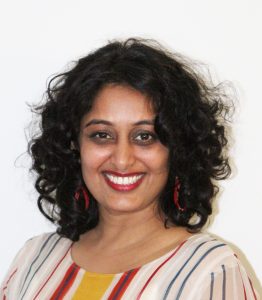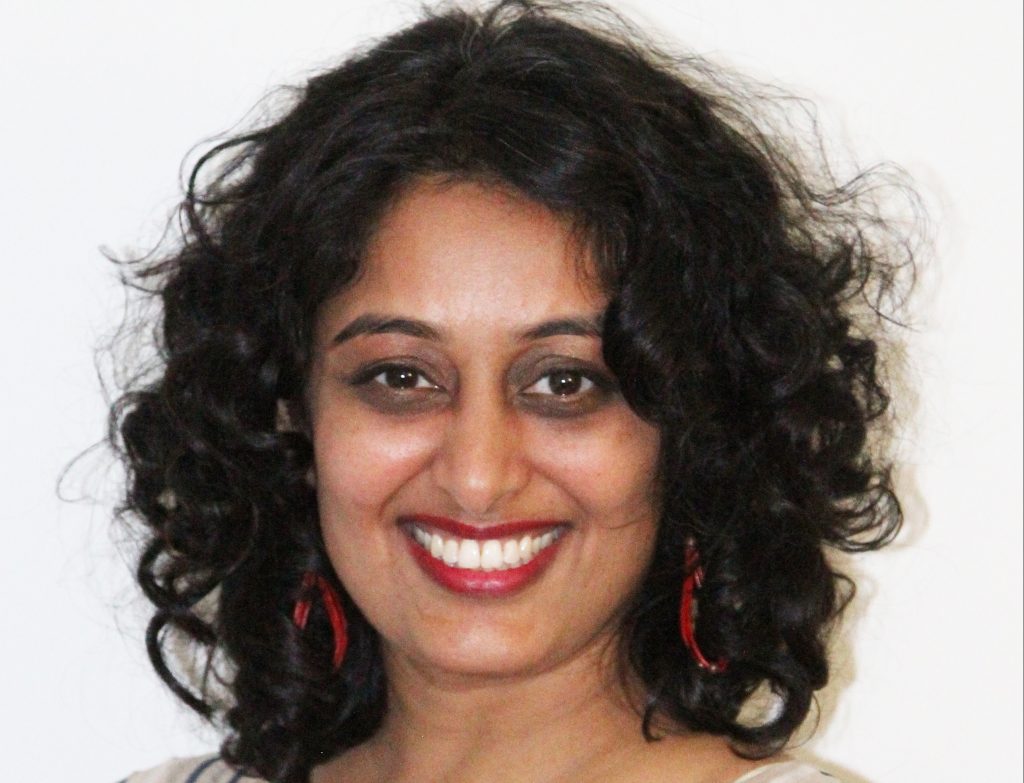New Faculty Profiles allow GSA members who are establishing their first labs to introduce themselves to our wider community. If you’d like to submit your profile, please complete this form.

Aakanksha Singhvi
Assistant Member
Division of Basic Sciences
Fred Hutchinson Cancer Research Center
Lab website
Briefly describe the ongoing and expected research projects as your lab gets up and running.
In a nutshell, “Glia-Neuron interactions,” in health and disease. My laboratory wants to decode the molecular conversations between glia and neurons, the two major cell types of our nervous system. We know that disrupted interactions between glia and neurons are an underlying factor in many neurological disorders of development (e.g. Autism), function (e.g. sensory or cognitive impairments) and aging (e.g. Alzheimer’s). However, mechanisms underlying these interactions are still not well-defined at molecular resolution. We are excited to explore how glia regulate sensory perception, neuronal physiology, neural circuit activity, memory formation, and animal behavior. We use C. elegans as a genetic model because its nervous system has some unique features that make it an especially powerful system to address these questions in vivo.
How has being a member of GSA helped you advance in your career? Why do you think societies like GSA are important?
My association with GSA started as a graduate student and has helped me grow as a scientist throughout my career, including now in setting up as a new PI. My first C. elegans paper was in GENETICS, and my professional networks have grown through GSA-sponsored worm meetings. As a postdoc, I served as the first Trainee Representative on the GSA publication committee and the TAGC 2016 organizing committee. I have also known of GSA’s support for trainees and advocacy for basic research. As I start a lab, I realize that these experiences have influenced my perspectives on many facets of science—research, administration, mentoring, publishing, and career paths. As a new PI, I am now organizing a Glia workshop at the 2019 C. elegans meeting, and I look forward to continued association with GSA members and trainees.
Are you looking to recruit students and/or postdocs? If so, please describe and be sure to also post the opportunity to GeneticsCareers.org.
I am always excited to meet students and postdocs who share our wonder for glia-neuron interactions in the nervous system. My lab accepts graduate students from the fantastic inter-departmental programs between Fred Hutch and the University of Washington. Anyone who is interested, please email me! By the way, Seattle is a gorgeous city with an awesome and diverse scientific community.
What is your favorite thing about science or about your work?
Everything about biology is so cool! As experiences, the thrill of thinking, creating, and exploring this wonder freely with fellow scientists, as well as the “aha” moment when a puzzle clicks into place, are perhaps my favorite things about this job. Every new data point or mutant analysis is a dopamine fix.
As a biological question, I cannot stop being in awe of the nervous system! How do we sense the world around us, make memories of this rich and complex information? How do cells molecularly talk to each other; what do they say? What goes wrong in neural disease or aging? There are so many awesome puzzles to solve that one lifetime feels too little. So, for now, we are focused on finding everything we can about the most mysterious of cells in our brain—glia.
What do you like to do when you’re not at work?
My other passion is dancing, lindy-hop to dandiya! Throughout my postdoc I actively performed Bharatanatyam, an Indian classical dance form I have trained in, with a dance group in NYC. In a way, I find it parallels biology research. One spends long years passionately mastering the technique, the beauty of its structure and rules, and existing knowledge. Then, you start thinking outside the box, pushing boundaries with your creativity and unique thinking. Each performance takes practice and has a presentation structure and a story to tell. And it is pure joy when audiences engage with your story or findings!
Previous training experiences:
- BS, Gujarat University, India
- MS Fellow, National Center for Biological Sciences, India
- PhD, University of California Berkeley (with Dr. Gian Garriga)
- Postdoctorate, The Rockefeller University (with Dr. Shai Shaham)































